1946–79 VW Beetle values are finding wings, but some are still cheap fun
In part thanks to the craze around everything Porsche, “air-cooled” has become more badge of honor than anachronism. Looking at German cars, there’s still Volkswagen, but prices for these once-affordable vehicles have also ticked up. Thanks to the Camper van’s #vanlife mystique, the big Transporter has become downright precious. Karmann Ghias can be had below $50K, but you’ll be hard-pressed to find one in good shape under $20K. For now, at least, there’s still the trusty Beetle.
Plentiful and accessible, Beetles possess a magnetic sort of charm. Their easy pace attracts a happy-go-lucky contingent of owners from many demographics. On top of that, their distinctive shape makes them instantly recognizable even by the least automotively-inclined passersby.
People are, however, paying more for the People’s Car than they used to. We track Beetle values from 1946 to 1979 in our price guide, and over the last three years each decade of these little Germans has been caught in an upward current. With most years drawing strong interest from a young (Gen-X) audience, the Beetle has officially, ah, found its wings.

For a car that most identifies with flower children and Disney movies, the Beetle has unromantic origins. Originally drafted by Ferdinand Porsche in the ’30s to fulfill Hitler’s request for a “German People’s Car,” the Beetle had a no-nonsense brief: seat four, hit 100 km/h, climb a 30-percent gradient. Mass production began in December of 1945 in Germany, after the end of the war, under British supervision. The next year marked 10,000 units produced and the first export model arrived in the Netherlands in 1947.

The best thing to happen to the Beetle, however, arrived in 1948 in the form of Heinrich Nordhoff, a German engineer who got his start working on BMW engines and was recruited in 1948 by the British to manage VW’s Wolfsburg plant. Within a year, the Beetle boasted a convertible model, was being exported to the U.S., and had doubled its production volume. In 1953, Wolfsburg had built a half-million Beetles.
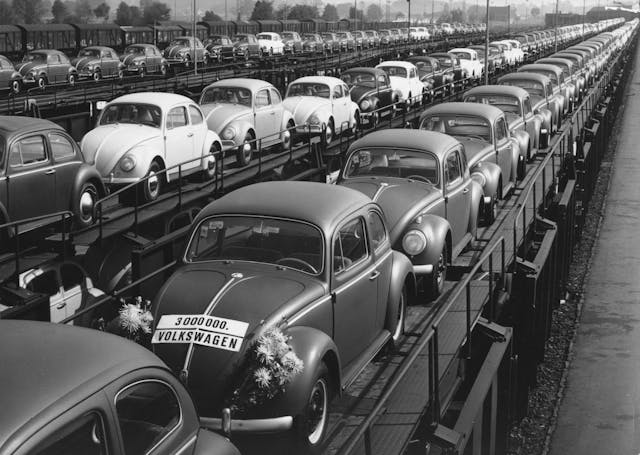
Under Nordhoff’s leadership, the Beetle adhered to a policy of “if it ain’t broke, don’t fix it”—and the original recipe was nearly bulletproof. There are not explicit “generations” of the Beetle the way there are demonstrable evolutions in, say, Corolla production—only a slew of running changes to the same basic WWII-era design that somehow stayed alive until 2003. Talk to a Beetle aficionado, and you’ll be surprised to hear them get excited about details like semaphores (until 1960 in Europe), integrated reverse lights (1968), or the shape of the side mirrors.
It is possible, however, to squint at 33 years of Beetle evolution and sort it into three general periods: the early cars (1946–48), cars built between 1949 and 1967, and those between ’68 and ’79.
Early cars—and especially the first-year, 1946 models—are the most desirable and the fastest appreciating, with values spiking 148 percent over the past five years. The spec sheet for the “1200” model is humble: a 1192-cc boxer-four constructed from lightweight magnesium alloy and riding on soft rubber mounts (genius stuff in the ’30s). It generated a noisy 34 horsepower and drove the rear wheels via a four-speed transaxle. Despite a shocking lack of glamour or, certainly by modern standards, usability, a first-year Beetle in #2 (Excellent) condition is a six-figure car: $119,000. Even one in more realistic condition—let’s say #4, or Fair, to be generous—is worth $41,600.
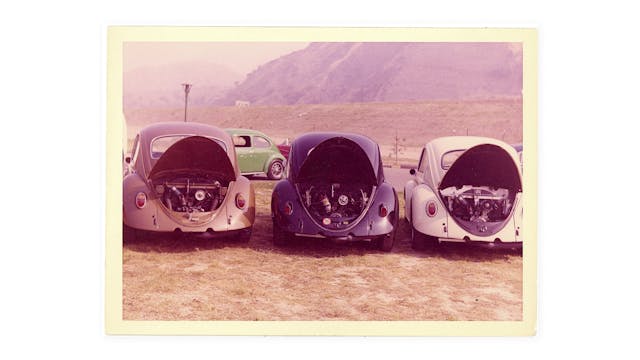
These cars are disproportionally quoted by baby boomers, who account for 69 percent of quotes. Though Beetles aren’t rare by any definition, their stated purpose as economy cars helps explain the eye-watering values of pristine examples; because Beetles were cheap and reliable, people bought them and, well, used them. Well-preserved examples of the early cars are less common, and for an older audience looking for a down-to-earth piece of ’50s nostalgia, they’re worth a pretty penny.
1949 marked the first year that the Beetle came to the U.S., resplendent in chrome bumpers and high-gloss paint. Lest you think Herr Nordhoff was overzealous in courting the affections of stateside buyers, consider that the Beetle didn’t receive an engine upgrade for another 18 years. The split, or “pretzel,” rear window remained until 1953, when it was replaced with an oval sheet of glass.

Convertibles, which arrived for the 1950 model year, command a consistent and significant ($2500–$6000) premium over their hardtop equivalents, even those optioned (1950 and after) with a sunroof. Early droptops command the highest premiums among the ’49–67 grouping; though if you think that first-year convertibles take top honors in the ’49–67 range, you’d be wrong. 1951 and ’52 models, which boasted vent windows rather than mere recesses, are worth $79,200 in #2 condition; 1950 models, a mere $68,900.
For those on a budget, fret not: You can skip the first several convertible years and find a ’50s Beetle in #3 (Good) condition for under $25K; if you’re willing to settle for a fair number of bumps and scratches, you’ll be in the $15K range. As of ’54, and until the final year of Beetle production, values for a well-loved sedan dip—and stay—below $10K.
Another standout from the ’49–67 range is the 1960 convertible, a momentous model year that brought the addition of a windshield washer and turn signals: In #2 condition, a droptop 1960 Beetle is worth $59,800. By this time, the Beetle had also gained dual exhaust (the famous pea shooters) and a 65 percent larger trunk.
Such minutiae is notable in this context largely because the Beetle changed so little in essence, which means it had to add equipment to keep up with the times. And so many—then and now—loved what the Beetle was: affordable, simple, endearing. Beetle owners also love to modify their vehicles, which means that a car that started as a 1500 and later got a 1600 dual-port or a Judson supercharger won’t irk anyone.

The Beetle’s reputation as a statement of individuality and counterculture gained real momentum in the late ’60s, after the introduction of a 1967 model with a 1493-cc, 34-hp boxer four. (The 1967 model is also distinguished for being the first year of 12-volt electrics and having several one-year-only quirks, including “lobster claw” seatbelts and rear bumper-mounted reverse lights.) In 1968—the same year that the first Herbie film, The Love Bug, hit the screens—Beetle fans gathered en masse at the Orange Country International Raceway (OCIR) Irvine, California for the first BUG-IN, an event held twice a year until ’83. The Beetle officially had an enthusiast following, and the West Coast’s love for the funky German found its way onto the drag strip as well as downtown.
Our last general grouping of Beetles is comprised of the ’68 to ’79 cars. After 1968 added black as the primary dashboard color, 1970 brought another bump in engine displacement, with the “1302” models carrying a 1585-cc clatterbox in their tails. Beyond the uprated powerplant, which now made 50 hp, ’70s Beetles received a larger rear window (’71) and turn indicators integrated into the front bumper (’74). Fuel injection arrived for the 1975 model year.

With the exception of ’68–70 models, convertibles in this range still carry a premium over sedans. However, we’ve observed over the last five years that #2 condition hardtops are appreciating faster than droptops: 45 percent, rather than 25–55. This still puts ’68–79 models behind their ’49–67 brethren, whose median #2 values are up 82 percent over the past five years.
The good news for those looking for entry-level air-cooled fun is that these later Beetles are among the cheapest of the crop. The most expensive variants—the ’76–79 convertibles—range between $34K and $46K in #2 condition. Any ’68–79 model in #3 (Good) condition, whether sedan or convertible, can be had for under $15K. If you want to learn how to wrench on a vintage car, a well-loved Beetle is a prime candidate: They’re mechanically simple, parts are widely available and shockingly cheap, and the community is vast. Plus, Beetles aren’t pretentious—a tired old Beetle still trudging along is cool in its own way.
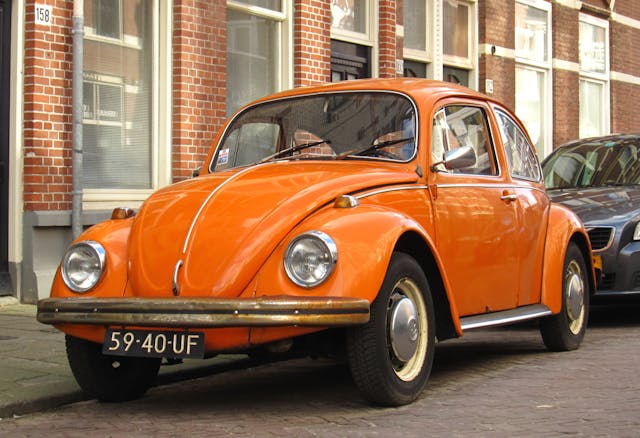
Like their midcentury counterparts, late ’60s and ’70s Beetles are most popular with Gen-Xers and with boomers, who comprise 35 and 34 percent, respectively, of quotes. (Gen-Xers are the biggest fans of ’49–67 Beetles, accounting for 41 percent of quotes. Boomers make up 32 percent.) The broad demographic of those interested in Beetles bodes well for the Bug’s future; it’s forever fixed as a cultural symbol of the ’60s, and you, your parents, and maybe even your grandparents likely have some sort of memory connected to one. Though certain years and configurations have reached the status of prized collectible, Beetles remain the people’s way to air-cooled German fun.
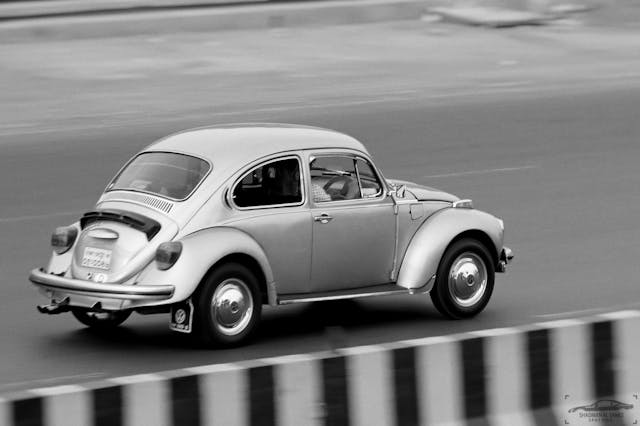


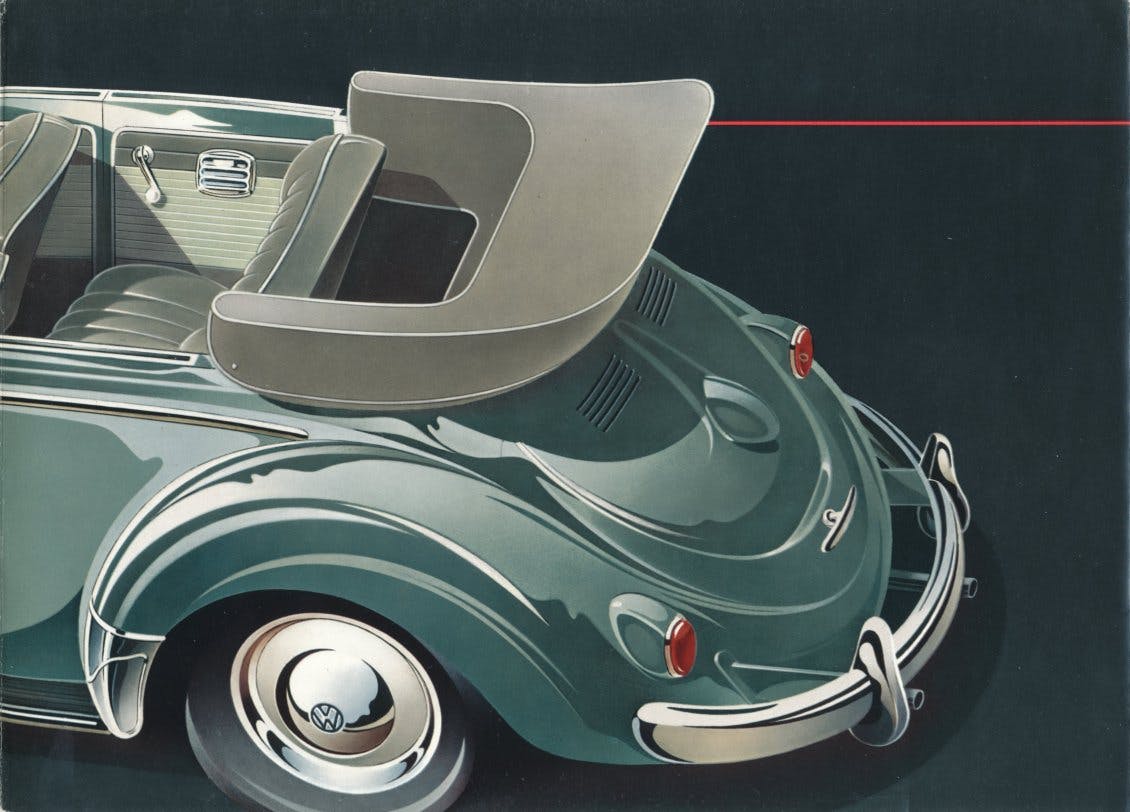
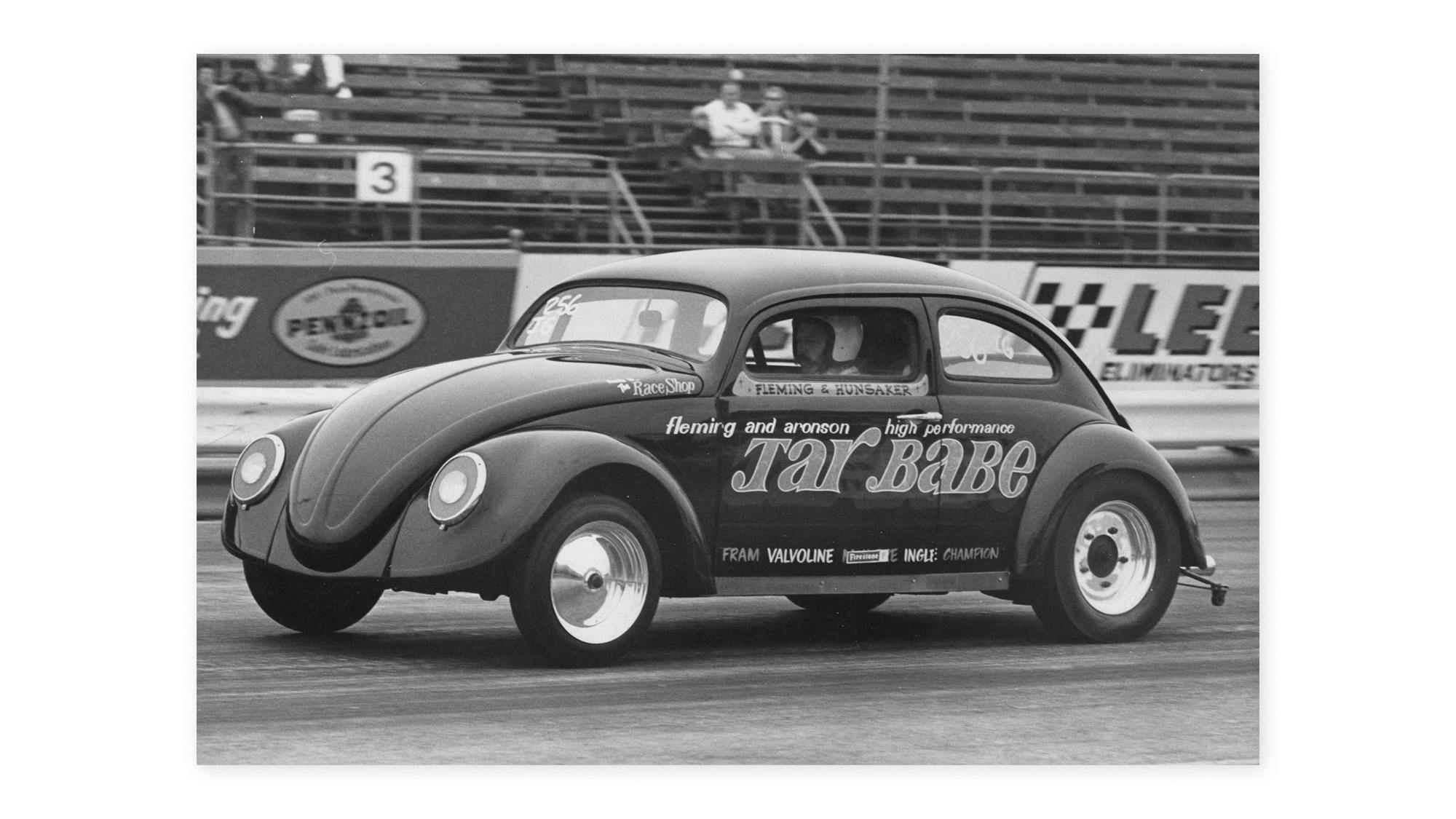
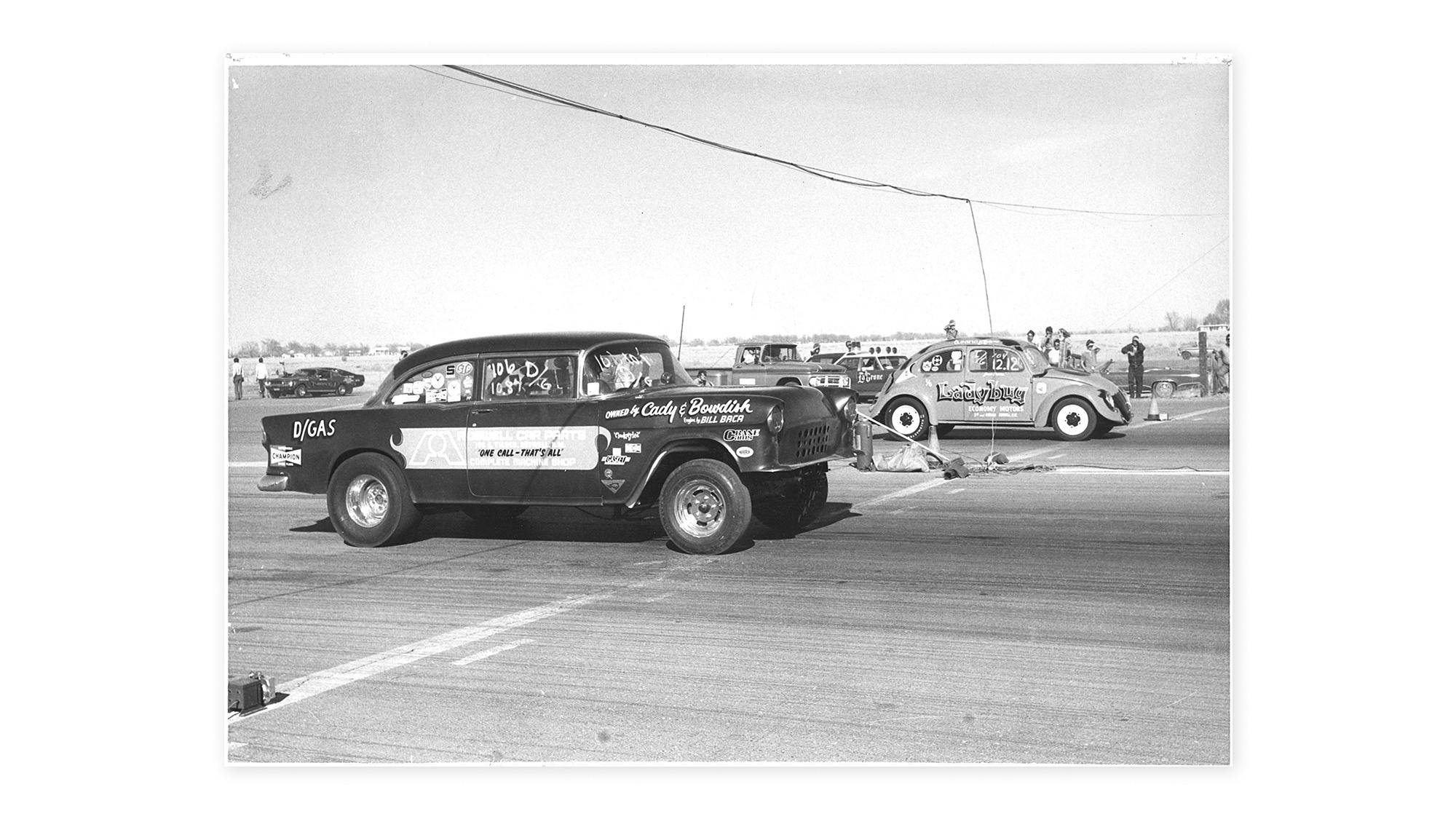
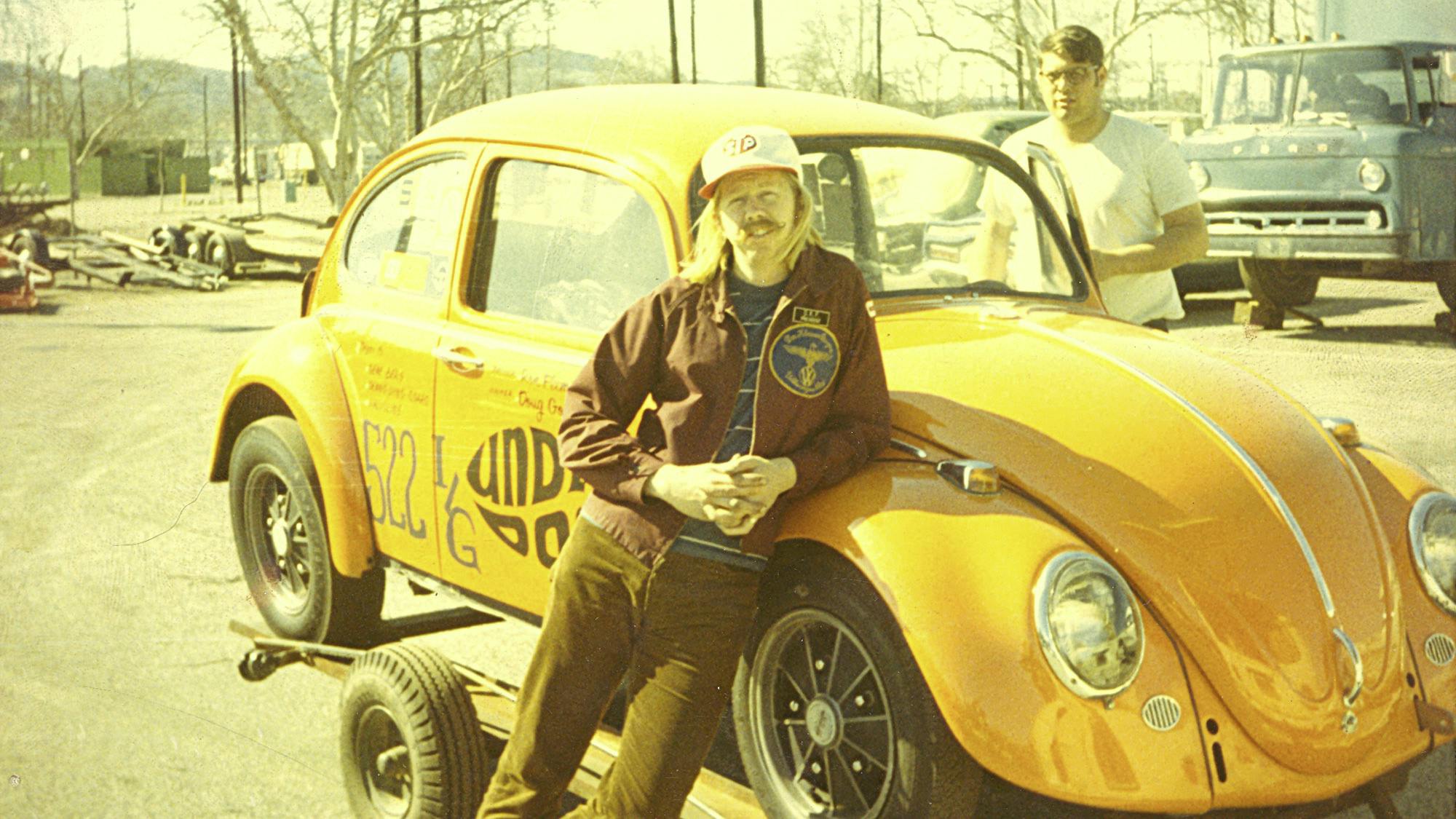


What would a ruff 1968 beetle go for?
Depending on the condition and if its a convertible or not priced around $1000 in fair condition
I have a fairly clean 1974 vw 412for sale original for sale
As part of an estate my sister and I have what is I think a 1973 white convertible. It hasn’t been driven for a couple of years. What is the best place to get it appraised and sold?
junkyard!
I CAN BUT IT
How much would a 1968 beetle she’ll with doors fenders glass steering wheel dash door panels front hood and rear hood with out pan be worth
you can pay the junkyard to take it
The write up is good but when the 67 1500 motor is introduced that is when your ChatGTP or other AI contribution went off track. All air cooled beetle 4 cylinders are and were boxers but the real issue is you missed the point:
The 1967 model year boasted 50hp making it finally able to pull up hills and run strong on freeways.
Thank you for reading, Adam. You’ll find no AI here. The inclusion of “boxer” there was merely one descriptor among a few of the new engine, just as it was used several paragraphs above to describe an attribute of the 1946 mill.
I have a 1974 VW convertible, chartreuse, black top. In good condition, but not show level. What could I get for it. I’m in Austin, TX if that matters. Thanks!
i have a 1978 VW Super Beetle Convertible has been sitting what would it be worth